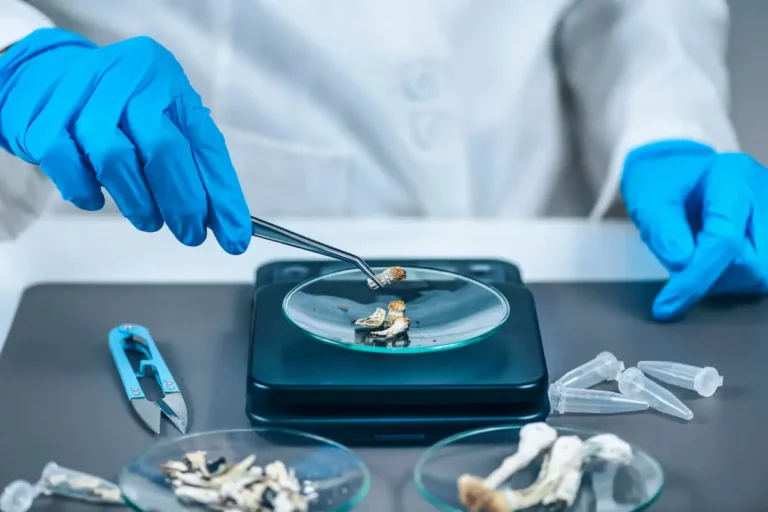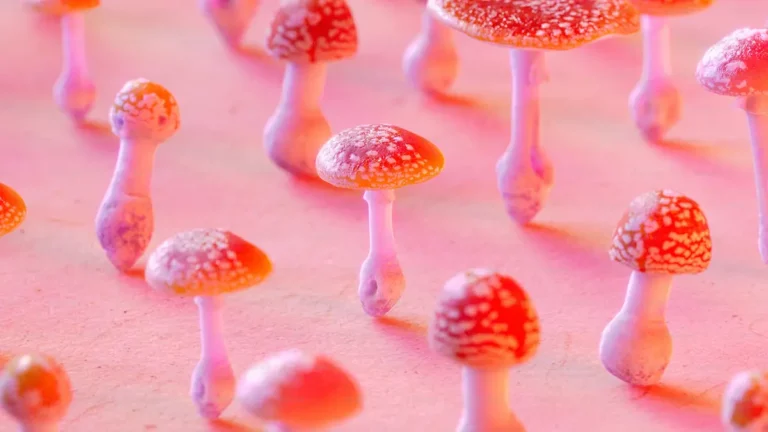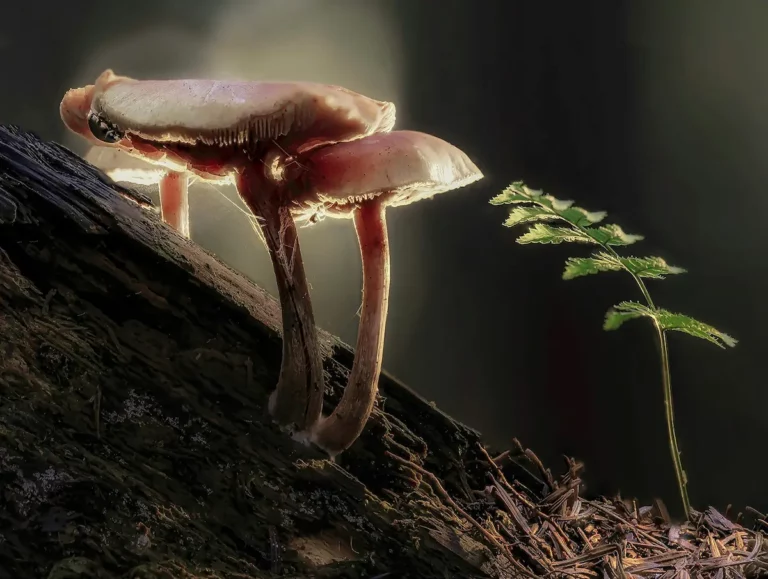Promises and Pitfalls of Microdosing Psilocybin
Many individuals who are struggling with mental illnesses such as depression or anxiety have sought out natural alternatives to the medications that they have to take that may or may not be effective. Psilocybin, as discussed in our recent blog posts, has been a topic of rising interest in the alternative medicine scene. Psilocybin is also being reconsidered for its potential for cognitive enhancement. These two benefits peak not only the curiosity of those individuals looking to treat themselves but also researchers who have yet to uncover all of the mechanisms of this fascinating substance. In this comprehensive review, we discuss research surrounding microdosing psilocybin, exploring its effects, potential benefits, risks, and the current state of scientific understanding.
Understanding Microdosing
Microdosing involves the regular consumption of sub-perceptual doses of a psychedelic substance, typically one-tenth to one-twentieth of a recreational dose. This practice aims to harness the potential therapeutic benefits of psychedelics while minimizing the psychedelic effects traditionally associated with higher doses. While macrodosing involves consuming a full recreational dose of a psychedelic substance, microdosing entails a more subtle approach, with users often reporting enhanced mood, creativity, focus, and overall well-being.
Psilocybin Microdosing Research
The scientific investigation of microdosing psilocybin is still very much in its beginning stages, but a growing body of research is shedding light on its potential effects and applications. Studies have explored the neurobiological mechanisms underlying the effects of psilocybin, suggesting that it may modulate serotonin receptors in the brain, leading to alterations in mood, cognition, and perception. Additionally, research has indicated that microdosing may promote neuroplasticity, the brain’s ability to reorganize and form new connections, which could have implications for learning, memory, and mental health.
One study published in the journal Psychopharmacology found that microdosing psilocybin was associated with improvements in mood, creativity, and overall well-being in a sample of healthy adults. Participants reported increased feelings of openness, decreased symptoms of depression and anxiety, and enhanced cognitive flexibility. These findings suggest that microdosing may hold promise as a novel approach to mental health enhancement and cognitive optimization.
This research not only points out the mental health benefits but also uncovers the biological underpinnings of how psilocybin might affect the brain. These studies start to teach us that perhaps there are therapeutic outcomes from this stuff not only in terms of macrodoses, but more subtly from micro doses. If you want to dive into the research more deeply, see our blog post, “Unearthing the Potential for Psilocybin Research.”.
Given the growing interest and enthusiasm of people towards microdosing, there is a lack of any scientific evidence to support its effectiveness and safety. Although preliminary studies and anecdotal reports appear promising, much more rigorous investigation is still necessary to properly establish the therapeutic value of microdosing psilocybin once and for all. Only controlled clinical trials can evaluate its effects systematically, compare these with extant treatments, and find possible risks and adverse effects.
Challenges in Microdosing Research
Several methodological challenges are involved in the study of microdosing psilocybin and other psychedelics. For instance, the lack of standardized dosing protocols makes it difficult to replicate findings across studies and establish optimal dosing regimens. Variability in individual response to psychedelics, as well as differences in set and setting, further complicate the interpretation of results and the generalization of findings to diverse populations.
Moreover, ethical and regulatory barriers pose significant obstacles to conducting research on psychedelics, including bureaucratic hurdles, stigma, and legal restrictions. Despite recent advancements in psychedelic science and increasing acceptance within the medical and scientific communities, entrenched attitudes and regulatory frameworks continue to hinder progress in this field.
Beyond Microdosing Mushroom Research in Studies
Beyond laboratory studies, anecdotal reports and self-reported surveys have provided further insights into the effects of microdosing psilocybin. Online communities and forums dedicated to psychedelic exploration are replete with testimonials from individuals who have experimented with microdosing regimens. Many users report experiencing subtle yet profound shifts in their perception, mood, and behavior, with some describing increased creativity, productivity, and emotional resilience.
However, it’s essential to interpret these anecdotal accounts with caution, as they are subjective and may be influenced by placebo effects, expectancy biases, or other confounding factors. Nonetheless, the sheer volume of anecdotal reports underscores the widespread interest in microdosing psilocybin and highlights the need for rigorous scientific investigation to validate and contextualize these experiences.
Psychedelic Microdosing
Psilocybin is not the only psychedelic being broken down into microdosing regimens.
According to reports we have read, microdosing can be of help for potential applications from mental health or boosting creativity to efficiency and personal growth. Some even go as far as suggesting that microdosing may be useful insofar as the practice offers safer, more accessible ways of dealing with depression, anxiety, post-traumatic stress, and addictions than classic psychiatric medication.
Symptom relief and emotional resilience may be seen as the effects of microdosing that open new therapeutic possibilities for those who have not been able to respond to conventional treatment.
Not only that, but microdosing has been used among competitive and demanding subcultures, such as academia and Silicon Valley, to optimize cognitive abilities and gain a competitive edge, as people report near-daily boosts in focus, concentration, problem-solving ability, and memory. Microdosing is gaining its popularity among such competitive, demanding subcultures like academia or Silicon Valley, where it is marketed as an opportunity for activation to unleash human potential and in reality, boost productivity with the use of a so-called “smart drug” or “nootropic.”
Microdosing Protocols
As microdosing is becoming more popular many protocols are being introduced for individuals to try. This allows people to not only see if they benefit from one protocol more than the other but also to see what fits best into their schedule.
Some protocols that have been proposed are:
The Fadiman Protocol
Developed by Dr. James Fadiman, this is one of the most well-known microdosing schedules. The Fadiman Protocol involves taking a microdose once every three days. The idea is to take a dose on Day 1, skip Day 2 and Day 3, and then take another dose on Day 4. This schedule ensures that your body has enough time to process and integrate the effects of the substance, while also preventing tolerance build-up.
Example Schedule:
- Day 1: Microdose
- Day 2: No dose (observation day)
- Day 3: No dose (observation day)
- Day 4: Microdose
Repeat the cycle for a period of 4 to 8 weeks, followed by a break to assess the overall impact.
The Stamets Stack
Paul Stamets, a renowned mycologist, developed the Stamets Stack, which combines psilocybin with niacin (vitamin B3) and lion’s mane mushroom. This combination is believed to promote neurogenesis and enhance cognitive function. The typical schedule involves microdosing for five days in a row, followed by two days off. We also have more information about the Stamets Stack in this post.
Example Schedule:
- Days 1-5: Microdose (along with niacin and lion’s mane)
- Days 6-7: No dose (rest days)
Repeat this cycle for a period of 4 to 8 weeks, followed by a break.
Every Other Day Protocol
This protocol is a simpler alternative for those who find the Fadiman and Stamets protocols too structured. As the name suggests, you take a microdose every other day. This approach allows for frequent dosing while still providing regular breaks to prevent tolerance.
Example Schedule:
- Day 1: Microdose
- Day 2: No dose
- Day 3: Microdose
Continue this pattern for several weeks, followed by a break to evaluate the effects.
Choosing the Right Protocol for You
Selecting the appropriate microdosing protocol depends on your personal goals, lifestyle, and how your body responds to the substances. Here are some tips to help you decide:
- Start Slow:
If you’re new to microdosing, begin with the Fadiman Protocol to understand how you respond to the substance without overwhelming your system. - Journal Your Experience:
Keep a detailed journal to track your doses, effects, and any side effects. This will help you make informed adjustments to your protocol. - Consult Professionals:
Whenever possible, seek advice from healthcare professionals, especially if you have underlying health conditions or are taking other medications. - Listen to Your Body:
Pay attention to how you feel on dosing days and non-dosing days. Adjust your protocol if you experience any discomfort or adverse effects.
Microdosing can be a powerful tool for enhancing well-being and productivity, but it requires careful planning and self-awareness. By following a structured protocol and monitoring your progress, you can safely explore the potential benefits of this practice.
Future Directions
As interest in microdosing psilocybin continues to grow, it is imperative to prioritize rigorous scientific inquiry and evidence-based practice. Future research should focus on elucidating the neurobiological mechanisms of microdosing, refining dosing protocols, identifying potential therapeutic applications, and evaluating long-term outcomes. Collaboration between researchers, clinicians, policymakers, and psychedelic advocates will be essential to overcoming barriers and advancing the field of psychedelic science.
Conclusion
In conclusion, microdosing psilocybin represents a promising yet understudied approach to mental health enhancement, cognitive optimization, and personal growth. While preliminary evidence suggests potential benefits, more research is needed to establish its efficacy, safety, and therapeutic value conclusively. By addressing methodological challenges, overcoming regulatory barriers, and fostering interdisciplinary collaboration, we can unlock the full potential of microdosing psilocybin and harness the transformative power of psychedelics for the betterment of individuals and society.
Full Psilocybin Journey – Apply here
Sources:
- Cavanna, F., Muller, S., de la Fuente, L. A., Zamberlan, F., Palmucci, M., Janeckova, L., Kuchar, M., Pallavicini, C., & Tagliazucchi, E. (2022). Microdosing with psilocybin mushrooms: a double-blind placebo-controlled study. Translational psychiatry, 12(1), 307. https://doi.org/10.1038/s41398-022-02039-0
- Kaypak, A. C., & Raz, A. (2022). Macrodosing to microdosing with psychedelics: Clinical, social, and cultural perspectives. Transcultural psychiatry, 59(5), 665–674. https://doi.org/10.1177/13634615221119386
- Kuypers K. P. C. (2020). The therapeutic potential of microdosing psychedelics in depression. Therapeutic advances in psychopharmacology, 10, 2045125320950567. https://doi.org/10.1177/2045125320950567
- Kuypers, K. P., Ng, L., Erritzoe, D., Knudsen, G. M., Nichols, C. D., Nichols, D. E., Pani, L., Soula, A., & Nutt, D. (2019). Microdosing psychedelics: More questions than answers? An overview and suggestions for future research. Journal of psychopharmacology (Oxford, England), 33(9), 1039–1057.
https://doi.org/10.1177/0269881119857204 - Wong, A., & Raz, A. (2022). Microdosing with classical psychedelics: Research trajectories and practical considerations. Transcultural psychiatry, 59(5), 675–690. https://doi.org/10.1177/13634615221129115







